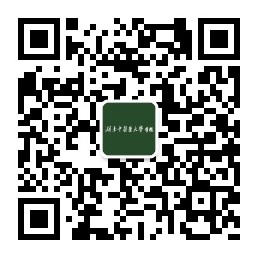| 引用本文: |
唐青, 苏丽红, 林丽莉.不同刺激量捏脊法对自闭症大鼠海马炎症相关因子及行为障碍的影响[J].湖南中医药大学学报,2025,45(7):1264-1270[点击复制] |
|
| |
|
|
| 本文已被:浏览 536次 下载 350次 |
| 不同刺激量捏脊法对自闭症大鼠海马炎症相关因子及行为障碍的影响 |
| 唐青,苏丽红,林丽莉 |
| (福建中医药大学针灸推拿学院, 福建 福州 350122;福建中医药大学附属第二人民医院, 福建 福州 350003) |
| 摘要: |
| 目的 探讨不同刺激量捏脊法对自闭症大鼠海马炎症相关因子和行为障碍的影响。方法 将40只自闭症模型大鼠随机分为模型组、固定组、交替组、递增组,每组10只;同时纳入10只正常大鼠为空白组。固定组、交替组、递增组分别采用不同刺激量捏脊法进行干预。干预结束后,5组大鼠进行旷场实验和三箱社交实验后处死,取全脑灌注固定后采用尼氏染色检测海马CA1、CA2区尼氏体阳性细胞数量,免疫组化检测海马CA1、CA2区白细胞介素-1β(IL-1β)、白细胞介素-1受体拮抗剂(IL-1Ra)、肿瘤坏死因子-α(TNF-α)的表达。结果 与空白组相比,模型组活动距离、活动时间增加(P<0.05),社交指数降低(P<0.05);模型组和固定组海马CA1、CA2区以及交替组CA2区尼氏体阳性细胞数量减少(P<0.05);模型组海马CA1、CA2区IL-1β、TNF-α表达量升高(P<0.05),IL-1Ra表达量降低(P<0.05);固定组CA2区TNF-α表达量升高(P<0.05)。与模型组相比,固定组、交替组、递增组活动距离、活动时间减少(P<0.05),社交指数升高(P<0.05);固定组、交替组、递增组海马CA1、CA2区和交替组、递增组CA2区尼氏体阳性细胞数量增加(P<0.05);固定组、交替组、递增组海马CA1、CA2区IL-1β、TNF-α表达量降低(P<0.05),IL-1Ra表达量升高(P<0.05)。与固定组相比,交替组与递增组活动距离减少(P<0.05),递增组社交指数升高(P<0.05);递增组海马CA1、CA2区尼氏体阳性细胞数量增加(P<0.05),IL-1β、TNF-α表达量降低(P<0.05),IL-1Ra表达量升高(P<0.05);交替组CA1区TNF-α表达量降低(P<0.05)。结论 固定、交替、递增刺激量捏脊均能改善自闭症大鼠行为障碍,改善海马炎症状态,减轻神经元损伤,交替、递增刺激量捏脊较固定刺激量捏脊效果显著,且递增刺激量捏脊与固定刺激量捏脊差异最明显。 |
| 关键词: 自闭症 督脉 捏脊 不同刺激量 炎症因子 海马 社交行为 |
| DOI:10.3969/j.issn.1674-070X.2025.07.009 |
| 投稿时间:2024-12-03 |
| 基金项目:国家自然科学基金青年项目(81704194);福建省属公益类科研院所基本科研专项项目(2023R1003006);福建省中医药重点学科建设项目(034025002005)。 |
|
| Effects of spine-pinching manipulation with different stimulation intensities on hippocampal inflammation-related factors and behavioral disorders in autistic rats |
| TANG Qing, SU Lihong, LIN Lili |
| (College of Acupuncture and Massage, Fujian University of Traditional Chinese Medicine, Fuzhou, Fujian 350122, China;The Second Hospital of Fujian University of Traditional Chinese Medicine, Fuzhou, Fujian 350003, China) |
| Abstract: |
| Objective To explore the effects of spine-pinching manipulation with different stimulation intensities on hippocampal inflammation-related factors and behavioral disorders in autistic rats. Methods Forty autistic model rats were randomly divided into a model group, a fixed-intensity group, an alternating-intensity group, and an incremental-intensity group, with 10 rats in each group. Meanwhile, 10 normal rats were included as the blank group. The fixed-, alternating-, and incremental-intensity groups received spinal manipulation interventions with varying stimulation intensities. After the intervention, the five groups of rats were sacrificed after the open-field test and the three-chamber social test. The whole brains were perfused and fixed, followed by Nissl staining to determine the number of Nissl-positive cells in the hippocampal CA1 and CA2 regions. Immunohistochemistry was used to examine the expressions of IL-1β, IL-1Ra, and TNF-α in the hippocampal CA1 and CA2 regions. Results Compared with the blank group, the model group showed increased movement distance and time (P<0.05) and a decreased social index (P<0.05). The number of Nissl-positive cells in the hippocampal CA1 and CA2 regions reduced in the model and fixed-intensity groups, while the alternating-intensity group exhibited a decrease only in the CA2 region (P<0.05). The model group displayed elevated expression of IL-1β and TNF-α (P<0.05) and decreased IL-1Ra expression (P<0.05) in the hippocampal CA1 and CA2 regions, whereas the fixed-intensity group showed increased TNF-α expression in the CA2 region (P<0.05). Compared with the model group, the fixed-, alternating-, and incremental-intensity groups exhibited reduced movement distance and time (P<0.05), an increased social index (P<0.05), and a higher number of Nissl-positive cells in the hippocampal CA1 and CA2 regions (P<0.05). Additionally, these groups demonstrated decreased IL-1β and TNF-α expression (P<0.05) and increased IL-1Ra expression (P<0.05) in the hippocampal CA1 and CA2 regions. Compared with the fixed-intensity group, the alternating- and incremental-intensity groups showed decreased movement distance (P<0.05), while the incremental-intensity group exhibited a higher social index (P<0.05). The incremental-intensity group displayed an increased number of Nissl-positive cells (P<0.05), reduced IL-1β and TNF-α expression (P<0.05), and elevated IL-1Ra expression (P<0.05) in the hippocampal CA1 and CA2 regions. The alternating-intensity group showed decreased TNF-α expression in the CA1 region (P<0.05). Conclusion Spine-pinching manipulation with fixed, alternating, and incremental stimulation intensities can all relieve behavioral disorders of autistic rats, alleviate hippocampal inflammation, and reduce neuronal damage. Spine-pinching manipulation with alternating and incremental stimulation intensities yields more significant effects than that with fixed stimulation intensity, with the most pronounced differences observed between incremental and fixed stimulation intensities. |
| Key words: autism Du meridian spine-pinching different stimulation intensity inflammatory factor hippocampus social behavior |
|

二维码(扫一下试试看!) |
|
|
|
|




